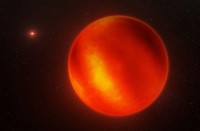(Editor’s note: EBC Europe Bureau’s Malou Francisco brings us to the Aguinaldo Shrine where the Philippine independence was first declared, on June 12, 1898. In her video report, she narrates to us a more detailed story of the declaration of the Philippine independence 123 years ago as she gives us a virtual personal tour of this historic home in Kawit, Cavite, which she and her family visited before the COVID-19 pandemic.)
By Malou Francisco
EBC Europe Bureau, Eagle News Service
(Eagle News) — The Aguinaldo shrine or the museum of President Emilio Aguinaldo. This is the house of history. The date, June 12, 1898. The place, Kawit, Cavite.
The proclamation of Philippine independence from over 300 years of colonial rule.
From this house, from one of its windows, the declaration of Philippine independence was read.
The Philippine flag was officially displayed in public, while the Philippine national anthem was being played.
Historical records say that the ceremony took place between four and five o-clock in the afternoon of June 12, 1898.
In this part of the house, the proclamation of Philippine independence took place. Later, in the1900s, Aguinaldo had the window expanded to include a balcony.
Meanwhile, the declaration of Independence , written in Spanish was read by its author Ambrosio Rianzares Bautista. A native of the province of Laguna, he was also an active revolutionary.
The occasion also marked the official public display of the Philippine flag. Before June 12, the flag was first unfurled in the battle of Alapan, Imus, Cavite on May 28, 1898. President Aguinaldo designed the flag while he was in exile in Hong Kong.
Here are some facts about the Philippine national anthem:
Professor Julian Felipe composed the music. In less than a week, the work was completed.
During the proclamation, the marching band of San Francisco de Malabon, now General Trias, played the national anthem. Later lyrics were adapted from the Spanish poem, Filipinas, written by José Palma in 1899.
The president of the first Philippine republic, Emilio Aguinaldo y Famy was born in this ancestral house in Kawit, Cavite on March 22, 1869. Aguinaldo donated his home to the Philippine government to keep the spirit of the Philippine Revolution which helped end the Spanish colonial rule of over 300 years.
-Memorable museum visit-
Fortunately, before the COVID-19 pandemic, my family and I visited the Aguinaldo museum in Cavite. It was a great learning experience for us especially for someone like my daughter, Marie who was born and raised outside the Philippines.
The museum is found on the ground floor. While touring the place, one can get to know the president of the first Philippine republic and the events leading to the proclamation of Philippine Independence.
On the second floor are the different rooms, pieces of furniture during Aguinaldo’s time, wood carvings that showcase the Filipino’s artistic talents, and photographs, many of which I saw for the first time.
In the middle of the garden behind the house is the final resting place of President Emilio Aguinaldo. On the sixth of February 1964 at the Veterans Memorial Hospital in Quezon City, President Aguinaldo passed away.
Having visited this historic place makes a Filipino proud of how the country achieved its independence. A visit to the Aguinaldo Shrine gives one a glimpse of this historic occasion so generations would learn to appreciate it more.
(Eagle News Service)
https://www.youtube.com/watch?v=FR1oi0oAxGg








